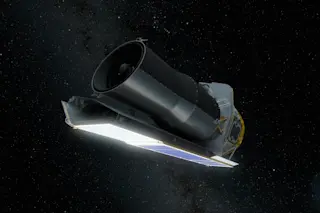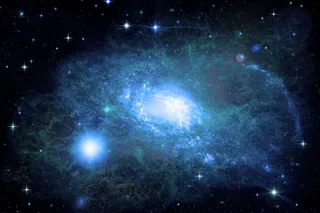If you are a longtime follower of astronomy news, you find yourself learning a lot of weird acronyms. When I was young, I was excited by four letter-jumbles in particular: LST, GRO, AXAF, and SIRTF, the abbreviated names for NASA's four Great Observatories. They would be launched into space to view the universe without the handicap of having to look through our planet's distorting atmosphere, with each observatory taking a unique perspective. LST would look at visible light, GRO at gamma rays, AXAF at x-rays, and SIRTF at infrared radiation, like light but with a longer wavelength.
All four of them eventually turned into real missions with real names. LST (the Large Space Telescope) became the Hubble Space Telescope. GRO (the Gamma Ray Observatory) became Compton. AXAF (the Advanced X-ray Astrophysics Facility) became Chandra. SIRTF—pronounced "SIR-tiff," the Space Infrared Telescope Facility—was the last one to be launched, in 2003, and ...














